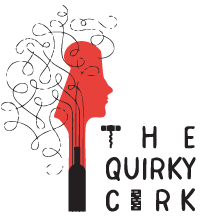
The Best Narince Wines to Try in 2025
Narince has an interesting story. While one can now find it in many places around Turkey, its home is the Black Sea region district of Tokat. A number of wineries own vineyards there but most contract with independent growers. This has become a problem though. While winemakers strive for quality wine, they are thwarted in their efforts by receiving damaged fruit from growers. The Narince leaf is traditionally used to make stuff grape leaves here and growers sell to both leaf wholesalers and wineries. A later-ripening variety, by the time the grapes reach peak ripeness, vines have already been denuded of leaves so a good chunk of the grape harvest is wind/sunburned or otherwise damaged due to lack of canopy protection.
Narince, which translates as “delicately” in Turkish, earned its name due to its very thin skins, making it especially important that they grapes have canopy protection while they ripen. One way wineries have solved this issue, is by growing the grape in their own vineyards. As such, Narince has become one of the most well-traveled grapes in Turkey. From its Black Sea home, Narince now grows in the Strandja Mountains of Trakya, the Denizli Plateau in the Aegean, across Central Anatolia, the heights of the Mediterranean’s Taurus Mountains, and elsewhere. It has displayed a remarkable ability to both adapt to different terroir and display different characteristics depending on where it grows.
While not nearly exhaustive in regards to how many Narince wines are on offer, the below are my picks for the best Narince wines available.
Vinkara Doruk Narince
For the lower price segment, it’s hard to beat Vinkara‘s Doruk Narince. Located in Kalecik outside the Turkish capitol Ankara, Vinkara grows its Narince onsite (vs buying in from the Black Sea). Kalecik’s climate is considerably colder and drier than Tokat, giving Vinkara’s Narince a distinct character.
Rich peach, orange-blossom, and something herbal and sage-adjacent made for a full and ripe bouquet. While the benefits of sur lie ageing were apparent in the creamy texture and medium body, the wine in no way traded its acid for that creaminess. Zippy acid up front carried flavors of peach and pineapple into a lovely, persistently round and silky finish.
Likya Vineyards Narince
Likya‘s vineyards enjoy a very special climate. I find that, almost across the board, their wines are tauter and have more finesse and elegance than many others and I think the climate has a lot to do with it. The vineyards sit at very high elevations (average of 1100 meters) in the Taurus Mountains above Elmalı, part of the Antalya province. In addition to the moderating influences of such elevation, the vineyards also benefit from their proximity to the Mediterranean Sea.
Limequat, grapefruit zest, fresh herbs, jasmine, white pepper, hints of honey framed by zesty acidity. A suggestion of vanilla cream along with key lime sherbet and lemongrass on the finish. Medium-bodied with a whopping 14% alcohol (not that you’d notice it was so well done). Really, really lovely.
Vinolus Narince
I’ve drunk a lot of Narince since moving to Turkey of both the “fresh” and “rich” styles. I approach the richer wines cautiously as often that means oak and even more often it means a heavy hand therewith. Vinolus has a very deft hand with that oak. Made with organic grapes grown in the volcanic soils of Kayseri and aged in French oak barrels, Vinolus gives us yet another expression of Narince.
Gunsmoke, grilled tree fruit, honeycomb, and chamomile make up the bouquet here while sipping reveals lively acidity that lifts the fruit sensed on the nose from grilled to ripe and crunchy. Add to that flavors of apricot, honey, flint, and mineral. Medium-bodied with a lingering finish. Gorgeous.
 Turasan Seneler Narince
Turasan Seneler Narince
Another wine for the lower-priced segment is the Turasan Seneler Narince. Turasan, while based in Cappadocia, does source its Narince grapes from Tokat. And, for those hesitant about oak-aged white wines, this is a good, soft intro for you. The wine ages for about 10 months in French oak barrels, but there’s little to no new oak use here. The influence is gentle and adds a roundness and biscuit notes versus in your face vanilla and butter tones.
Tropical notes of pineapple accompany quince, golden and green apples, and splashes of bergamot. Round and creamy on the palate, the big fruit flavors are complimented by shortbread biscuit and subtle vanilla notes.
 Arda Vineyards Rezerv Narince
Arda Vineyards Rezerv Narince
In addition to giving Narince a new terroir expression in Edirne in upper Trakya, Arda also employs a different winemaking method for its Rezerv Narince. For this vintage, stainless steel aged wine was blended, two parts to one, with wine that aged for five months with regular battonage in lightly toasted French oak. The result is stunning.
In the glass the wine resembles a Riesling with its distinctive, star-bright, silvery straw color. The nose displays some of the characteristic aromas of Narince including citrus, quince, and white flowers with the added kick of…blue cheese? Yes. I thought I was going a little crazy but I wasn’t the only one picking up that particular aroma. One of those wines I like to call ‘dangerously delicious’ with flavors of, again blue cheese, orange peel, and flowers it’s a fantastic and far too easy to drink wine. Brilliant on its own it also holds up against oily foods and pairs well with Turkey’s traditional stuffed grape leaves and yogurt.
 Arcadia Nareen
Arcadia Nareen
This is a wine for those who want to, or can, splurge. As, really, are all Turkish sparkling wines these days.
In Trakya’s Kırklareli, Arcadia‘s vineyards enjoy a broadly continental climate, tempered by the high diurnal temperature range, with warm days and very cool nights. The soil is mainly sedimentary, of alluvial origin, and would once have been a sea floor. It’s makeup is predominantly silty clay, including also sandstone and granite substrates. Arcadia worked on its traditional method sparkling Narince, called Nareen, for years before releasing its fist vintage. Wine spends 24 month on the lees and bottles are hand riddled and rest in wooden pupitres tucked into the back of the wineries barrel room.
Aromas of green and golden apples tumble out of the glass, chased by citrus and mineral. On the palate, flavors were so clean they were almost sharp softened by delicate almond flowers. Topped off with a mouthful of frothy mousse dancing every bit as joyfully as I did while drinking it. Just so beautiful.
Speaking of Arcadia…
Arcadia Finesse Sauvignon Blanc Narince
A number of wineries also offer Narince blends. The Arcadia Finesse Sauvignon Blanc Narince blend isn’t easy to get your hands on, but is worth the effort to find. While the blend is majority Sauvignon Blanc, the addition of Narince adds an immense richness to the wine.
A quick swirl reveals slightly toasty aromas, a splash of orange, and a sprinkle of brown spices wrapped around a core of quince and golden apple. Crisp but with an elegant roundness, the first sip is like biting into a fresh Golden Delicious apple while standing in an orchard in full bloom. As it lives in the glass, it evolves into a more voluptuous and tropical experience. Juicy pineapple, loquat, and rich citrus curd slide into a long finish.
 Ayda Bağları VinAida Derin 2
Ayda Bağları VinAida Derin 2
Ayda Bağları‘s wines are annoyingly difficult to find in Istanbul, so, if you see the Vinaida Derin 2 anywhere a) get a couple! and b) let me know where you found them! Like Arcadia, Ayda Bağları’s VinAida Derin 2 is a Sauvignon Blanc Narince blend. Like all her wines, Ayda hanım ferments the two separately on native yeasts in oak barrels before blending and aging.
Intense aromas of tobacco flower, citrus, and exotic and unripe stone fruit (loquat). On the palate it had the weight and almost oiliness some Narinces have along with the racy acidity of Sauvignon Blanc. Again, tobacco flowers but mingled with flavors of ginger blossom, finger limes, and apricot jam. Medium plus body, lingering finish, and a dangerous 15% abv. Dangerous, because the balance is there and you really won’t notice how high the alcohol is until you’ve finished the whole bottle and then maybe regret it a little. Possibly I know from experience.
Kayra Buzbağ Rezerv Narince Emir
Kayra’s Buzbağ Rezerv combines two grapes we don’t see together all too frequently: Narince and Emir. Kayra is a large company so I’m going to assume that they’re pulling grapes from Tokat and Cappadocia (respectively). What they also don’t bother to put on the label, what percentage of each grape is in the wine. The wine matured for eight months in 600 liter French oak. An unusual move for Emir which, thus far, has shown no affinity for oak. Although, personally, I think that’s due to clumsy winemaking and not the grape but let’s not get lost in a tangent.
Brilliant, pale green-straw in the glass with a delicate perfume. Top notes of all things lemon from the fruit to flowers and lemon balm give way to richer pear and playful mineral twists. It may sound simple but it was not. Round and silky with weight on the back palate, a vibrant acidity, and only 12.5% alcohol. Touches of lemon still present here but they gave way to richer flavors of Easter lily, vanilla mist, and pear compote.
Really lovely.
Despite what seems like an extensive list, this is not at all an exhaustive list of all the Narince wines available in Turkey! You can see all my various posts about Narince wines here.






